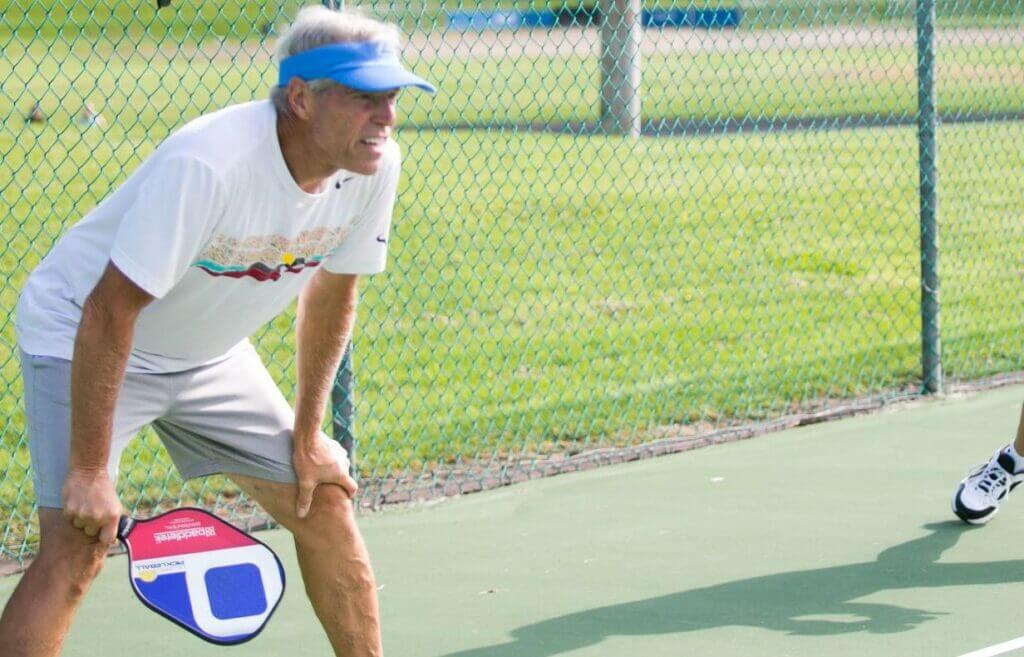by Jerone Foster
Pickleball is a game of defense and offense. For players, an important goal during a match is to turn the tables around and change their defense mode into an offensive. So, what should pickleball players do to keep their opponents at the baseline and keep on intercepting them as they make their way to the non-volley zone?
A must-learn strategy in taking the offensive mode is a combination of the 4th shot–step back–-drive, which can be applied by pickleball players of all levels.
Assuming a 3rd shot drop from the serving team, the player hitting the 4th shot is advised to hit the ball with a volley. With a volley, the ball will not bounce, and the opponent will have less time to get to the non-volley zone line. Then, as the opponents are forced to remain at the baseline, they will have no choice but to hit the 5th shot while still at the baseline or at the transition zone. In this case, a player can remain at the non-volley zone line while the opponents are at the far side of the court.
Now, players should consider a 4th shot with step back drive in certain cases. For example, for a 3rd shot drop with a high arc, if there’s a chance that a pickleball player may not be able to hit the ball in the air at the right moment, then the correct move should be to step back and let the ball bounce before hitting it with a volley dink.

Next for 3rd shot drops with a relatively flat arc and has a high chance of landing deep in the kitchen, which would require a low-contact point dink volley or half volley, then the best move is to scoot back and allow the ball to bounce, allowing for a higher contact point before hitting the ball. In addition, the step-back shot becomes more offensive when coupled with the top spin shot.
Of course, before a pickleball player can do an effective 4 shot–step-back–drive, they must anticipate and prepare for the kind of 3rd shot that their opponent will be making. In the case of a possible drop, the pickleball player should decide right away their actions, that is, whether they should step back and drive for an offensive shot.
Importantly, a pickleball player must ensure that their stance changes from an open to a close or semi-open one when they do the 4th shot-step back drive. In addition, the knees should be correspondingly bent to prepare for the incoming 3rd shot. As the 4th shot-step back-drive involves a medium to rapid drive, the paddle should be swung upwards to create a top spin. The path of the paddle should start at below the waist level or parallel to the knee and end at the should opposite of the swinging arm.
Next, the 4th shot-step-back drive also involves determining a certain target, that is, the feet of the opponent. This is just logical given that the aim of the shot is to make an offensive shot and thus prevent the opponent from reaching the non-volley zone line. In addition, hitting the ball toward the opponent’s feet or a foot in front of them results in a low contact point that will force the opponent to hit the ball upward.
In a word, the 4th shot–step back drive is a powerful tool to change one’s game into an offensive mode. Still, every pickleball player must realize that it cannot be done haphazardly and requires quick and thorough thinking before using it against their opponents.
